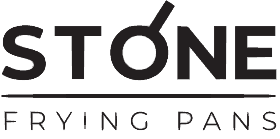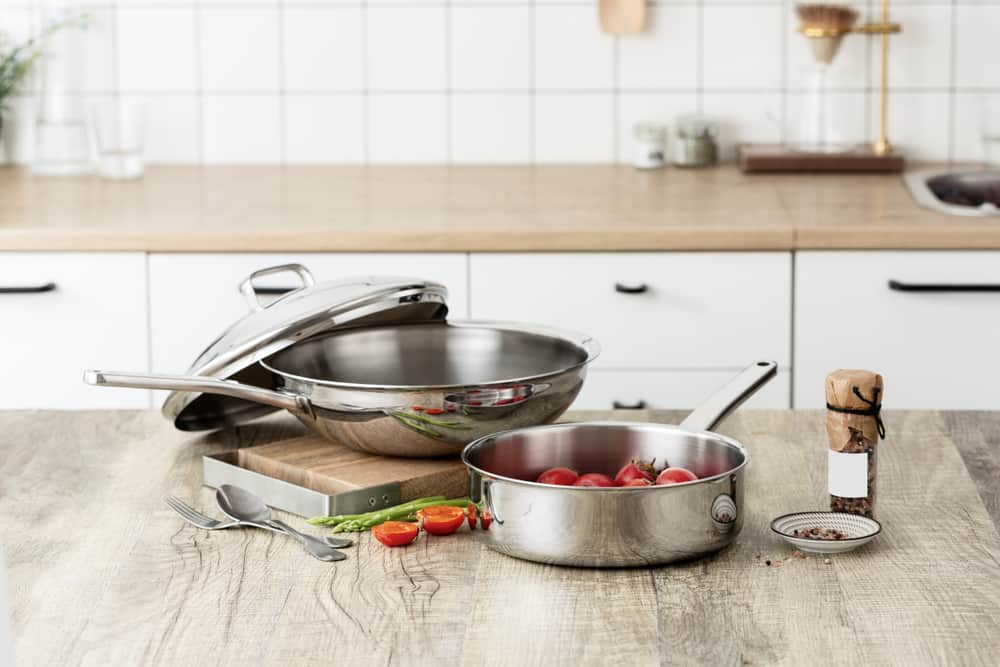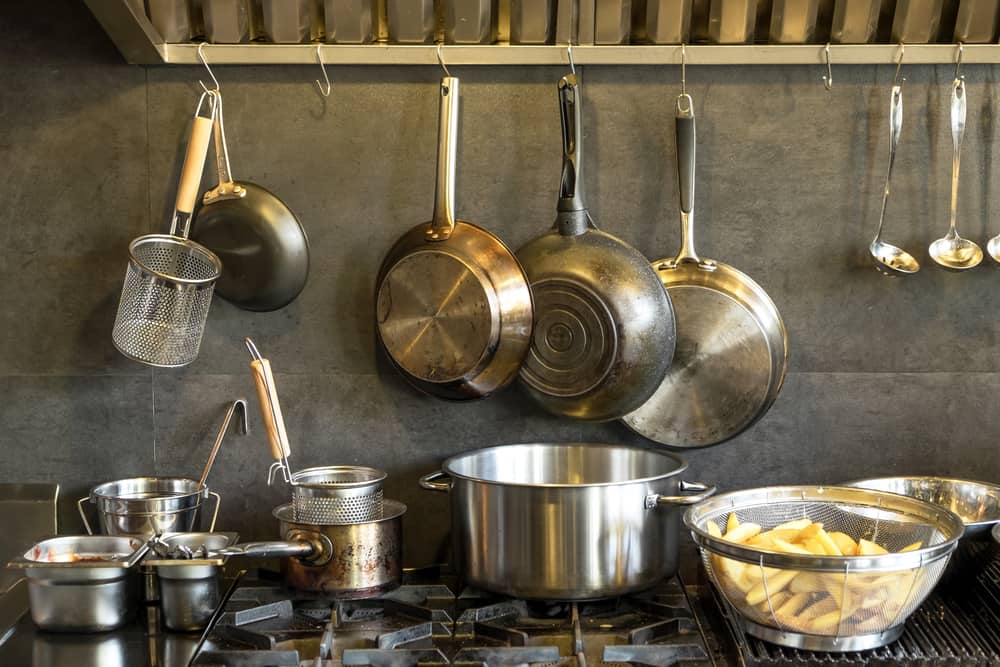Aluminum Cookware in 2023: Top Safety And Kitchen Use Guide
Aluminum is easily one of the most popular materials in the world for cookware. Infact, according to Statista.com, 87.9 million dollars worth of aluminum cookware was sold in the US in 2018!
So we know that aluminum is popular for home cooks, but does that necessarily mean it’s the best? With so many other materials available, all with their own unique benefits, it can be extremely difficult to decide what the perfect set of cookware is for you.
In this article, we’re going to be going over every aspect of aluminum cookware to give you all the knowledge you need about your pots and pans.
We’ll also take a look at how aluminum compares with other materials to help you decide what the ideal equipment is for you.
By the time you’ve finished reading this, you’ll be safe in the knowledge that your cookware is safe and appropriate for your kitchen, and you’ll be whipping up some fine feasts in no time!
Why is Aluminum the Best Material for Cookware?
The best aspect of using aluminum for cookware is the fact that it’s a very good conductor of heat. This means that when you put your aluminum pot onto a hot stove, it will heat up way quicker than most other materials.
This is measured by something called thermal conductivity. Scientists can work out how good metals are at heating up quickly and give each material a number based on how thermally conductive it is. The higher the number, the better.
For example, a cast iron pan (one of the other most popular materials for cookware) has a thermal conductivity score of around 80 w/m.k. On the other hand, aluminum boasts a score of almost 240 w/k.m! That means your aluminum frying pan could be heating up three times faster than a cast iron one.
Another great benefit of aluminum cookware, and another reason why it’s so popular, is how cheap it is to produce. Aluminum itself is a very common metal, so it’s easy to manufacture with it for low costs. These low costs are then passed onto consumers like you and me, meaning we can pick up aluminum cookware for a way lower price than some other materials.
You can even find some cookware products made from cast aluminum for a slightly higher price. The word ‘cast’ refers to the way the aluminum product is made. Molten aluminum is poured into a mold and left to cool before being treated for cookware use. The result is a stronger, more durable product.
You might be thinking to yourself: “this all sounds pretty good, I wonder why everyone doesn’t use aluminum cookware?”. It’s a fair question and there are a few reasons why someone might go for a different material than aluminum.
We’ll get into some of the more detailed comparisons between materials later in this article, but the main drawback of aluminum is how it reacts with certain foods.
It’s been found that aluminum can react with acidic foods in a way that causes the metal to seep into the food while it’s cooking. Obviously this isn’t great because nobody wants the taste of metal in their food. However, manufacturers have come up with a clever way around this issue known as anodization...
What Does ‘Anodized Aluminum’ Mean?
Because of the way aluminum reacts with acidic foods, causing the metal to stick to them, manufacturers have had to get scientific and creative to make aluminum cookware safe.
The main way they do this is through a process called anodization. In scientific terms, when aluminum is exposed to air, it creates a layer of aluminum oxide on the surface of the metal. This layer effectively creates a barrier between the metal and the air to stop it from anodizing further.
This aluminum oxide is great for making cookware products because it also creates a barrier that prevents the aluminum metal seeping into acidic foods while they’re cooking.
That means you can stop thinking about throwing out all your aluminum cookware! The risk of aluminum getting into your food from a modern set of cookware is tiny. Even if some does get in, it will be such a small amount that you won’t know it’s there and it won’t have any effects on your health.
What Does ‘Hard Anodized Aluminum’ Mean?
Anodized aluminum cookware can also take the form of regular anodized or ‘hard anodized’. Basically, hard anodizing aluminum creates an even thicker layer of aluminum oxide on the surface of the metal.
This makes hard anodized aluminum way stronger, more durable and more resistant to corrosion than regular aluminum or a host of other metals. Of course, this is also great for producing cookware, as you’ll have a product that will last longer and be less likely to break during use.
You might be worried about the anodized layer of aluminum oxide peeling off during cooking. These sorts of issues are common with some types of cookware, but thankfully it’s not the case here.
The artificial process means the anodization is worked into the metal, so there’s no danger of it peeling off and getting into your food or leaving your pan unprotected.
Despite the hard anodized aluminum being way better than the regular stuff, it doesn’t provide completely non-stick coverage for your cookware. Quite often, a hard anodized aluminum cookware product will be coated with a separate non-stick substance to make it easier to cook with and clean.
Don’t worry about it too much though, even without the extra coating, hard anodized aluminum cookware will still be relatively low-stick and shouldn’t be very difficult to get food off of.
Aluminum vs Other Materials
We’ve already established that aluminum is a great material to use for cookware products and it’s one of the most popular in the United States. However, other materials are still used by plenty of manufacturers because they all have their own unique properties that make them better than aluminum in some ways and worse in others.
In this section, we’ll compare the properties of aluminum with some of the other most popular materials for cookware.
Aluminum vs Stainless Steel
Stainless steel is commonly made with a combination of metals like carbon, chromium and iron. It can even be made with aluminum.
The main benefit of stainless steel over aluminum is that it’s more durable. This doesn’t mean aluminum isn’t durable because it is still one of the best metals for long-lasting cookware, it’s just that stainless steel is a little bit better at it.
What this means is that you won’t have to worry too much about scratches, pieces of metal chipping away, or your pots and pans wearing out too quickly.
However, stainless steel is a much worse conductor of heat than aluminum. Remember the thermal conductivity scores we talked about earlier? Aluminum has a score of almost 240w/m.k but stainless steel only has about 14w/m.k.
As you can imagine, this means an aluminum pan will be miles better at heating up quickly and evenly than a stainless steel pan. This is why stainless steel is often used as a mixture with aluminum.
Another issue you might find with stainless steel depends on your cooking style. A high quality stainless steel pot or pan needs to be heavy- that’s how you know it’s good quality. If you’re the type of chef who likes picking up their cookware and tossing food up in the air, you might find it difficult with heavy stainless steel. Of course, if you have the upper body strength to pull it off, there’s no reason to hold back!
In general, aluminum is probably better for cooking than stainless steel, especially hard anodized aluminum. However, if you still want the benefits of stainless steel’s durability with the great thermal conductivity of aluminum, you’ll want to look out for cookware that uses a combination of the two.
Aluminum vs Teflon
Teflon is the name of one of the world’s most popular non-stick cookware brands. All non-stick products are coated on the inside with a chemical called polytetrafluorethylene (that’s a heck of a mouthful!) and the main benefit is exactly what it says in the name: it stops food from sticking to the cookware.
Naturally, it makes sense to be a little cautious of having chemicals near your food, but thankfully Teflon have adhered to the strict guidelines that are in place to ensure all their products are safe to use for cooking.
However, there are still some concerns in the cookware world about the environmental impacts of Teflon’s non-stick chemical coating. The manufacturing process of polytetrafluorethylene isn’t very eco-friendly, so if this is a concern for you, non-stick might not be the way to go.
In terms of Teflon’s use in a kitchen, it’s tough to find a more convenient and easy-to-use set of cookware. Teflon pots and pans are really easy to clean and, if you’re cooking lots of big batches of food at once, you’ll probably only need to wipe the inside with a paper towel between uses.
Another great benefit of using non-stick cookware is that you can make your dishes healthier. Most recipes will call for you to use some kind of oil or fat to provide lubricant when frying something.
However, with a non-stick pan, you’ll need to use way less oil and maybe not even any at all! If you’re trying to cut down on calories and fat in your meals, Teflon can help you out big time.
At the end of the day, though, if you’re looking for a set of cookware that will allow you to cook the best meals, the thermal conductivity or aluminum can’t be topped by Teflon.
Not to mention, plenty of people have found that the non-stick coating on Teflon products comes off pretty easily if you’re using the wrong implement with it.
If you want to avoid all these issues and stick with a reliable material, aluminum wins this round.
Aluminum vs Cast Iron
One of the big titans in the cookware industry is cast iron. This material is known for holding heat well, even if it does take a while to come up to the right temperature.
If you’re cooking lots of things at once and need something to stay warm until other components are ready, cast iron is perfect for you. However, once everything is finished and you want to start washing up, you’re going to have to wait a while for your cast iron cookware to cool down first.
Also, most cast iron pots and pans come without a plastic or wooden handle, making them safe to use on a stove or in the oven. This versatility doesn’t just restrict itself to the kitchen though, you can even use cast iron in an outdoor BBQ to add some rich, smokey flavor to your meals.
It’s also famous for being one of the most durable materials for cookware, with some cast iron products being passed down through generations of a family and still working just fine.
This durability does come with a cost and that cost is the weight. Cast iron is one of the heaviest materials for cookware, so it might be a strain on the muscles if you’re using it often.
You’ve also probably heard of people seasoning their cast iron cookware. Now, this doesn’t mean people are adding herbs and spices to their skillets, rather treating it a certain way to add more flavor to their food.
Briefly, the process involves thoroughly washing and drying the cookware before baking a thin layer of vegetable oil into it. This is a key step for any cast iron owner to take before cooking their first meal.
The same process can also be done with cast aluminum products and it’s also a good idea to do it before ever cooking with one. Generally, the seasoning process helps maintain the durability of your cookware and leaves your dishes tasting better.
Despite all the benefits of cast iron over aluminum, there are a few drawbacks. Not only does it take more time to heat up and is more difficult to wash, cast iron is also more vulnerable to rust.
Without taking proper care of cast iron cookware, you could see it start to deteriorate over time, actually making it less durable than aluminum. At least with aluminum products, you don’t have to worry so much about this.
Overall, the main reason people choose aluminum over cast iron is the difference in price. A good quality cast iron cookware set could cost hundreds, or even thousands of dollars, depending on the quality you need.
However, you’ll be able to find aluminum products for way cheaper and with a much bigger range of price and quality.
Frequently Asked Questions
What are the pros and cons of aluminum cookware?
Pros:
- Great thermal conductivity - Because of the basic properties of aluminum metal, cookware made from aluminum is really good at conducting heat. This basically means aluminum pots and pans will get up to the right temperature really quickly but also cool down quickly after use, making it easier to clean.
- Relatively low cost - Compared to some other materials, aluminum is pretty cheap to produce, therefore aluminum cookware won’t cost much from a store. They’re also so budget friendly and common that you should be able to find a decent range of aluminum cookware in most places you look- even supermarkets.
- Good durability - Most aluminum cookware nowadays is treated by a process called anodization, which is done to make it safer to use and last longer. As long as it’s treated well and cleaned regularly, a high quality aluminum cookware set can last years without wearing out or falling apart.
Cons:
- Risk of aluminum leaching into food - The anodization process that most aluminum cookware goes through helps to prevent this but there is still a small risk of the aluminum metal reacting with acidic foods and leaching into them. However, the amount of metal that could ever get into your food is so small that you would never notice it and it certainly wouldn’t affect your health.
Is aluminum cookware safer than Teflon?
Overall, aluminum is safer to use for cooking than Teflon. However, both of them pose slight risks when it comes to manufacturing.
The risk with aluminum is that the metal will react with acidic foods and leach into them while cooking. However, most aluminum cookware comes anodized as standard, which creates a protective layer between the metal and your food.
The risk with Teflon products is slightly greater. Lawsuits have been filed in the past over Teflon’s non-stick coating releasing toxic fumes when heated above certain temperatures.
As well as this, customers have complained about the non-stick coating coming off and getting into food when used with the wrong utensils. However, developments in recent years have made Teflon products much safer than they used to be
Does aluminum cookware cause Alzheimer's?
Aluminum cookware DOES NOT cause Alzheimer’s disease, and it never has. This was a myth started in the 60s and 70s that led people to be suspicious of using aluminum cookware and even drinking from aluminum cans. However, numerous studies have since been conducted and failed to find any connection between aluminum and Alzheimer’s.
Why should you not use aluminum cookware?
Despite being one of the most popular materials for home cooking equipment, there are a few reasons why someone might not want to use aluminum:
- It can’t withstand extremely high temperatures as well as a material like cast iron.
- Aluminum can react with acidic foods, resulting in some of the metal leaching into foods while being cooked.
- Aluminum is a softer metal, meaning cookware made with it is often less durable than stainless steel or cast iron.
- Food can become stuck to the surface of aluminum cookware and make it more difficult to clean. This problem is less apparent with a non-stick material, such as what you find on Teflon products.
Final Thoughts
What we’ve learned from this article is that aluminum cookware products are commonly found in kitchens across the United States and the rest of the world. There are many good reasons for its popularity.
Namely, the fact that it’s one of the most affordable materials to manufacture into cookware, meaning it’s easy for customers to find a good deal at a variety of stores or online.
It’s also very versatile to manufacture with, so if you are looking around for some aluminum cookware, you’re likely to find plenty of options, varying in price and quality. You shouldn’t have any issues with finding one that’s right for you.
In general, aluminum is one of the most convenient materials for cookware. It’s lightweight, so you can toss and flip your food to your heart’s content!
It also heats up and cools down super quickly compared to other materials, cutting down on cooking time and time spent washing the dishes.
The only thing you should be wary of is the metal reacting with more acidic foods and leaching into your dishes. However, with the developments of anodization, most modern aluminum cookware shouldn’t have this problem.
Of course, there are plenty of other materials out there that all provide different benefits and costs compared to aluminum. However, if you’re looking for an all-rounder that can provide everything you need for a reasonable price, aluminum is definitely the way to go!


